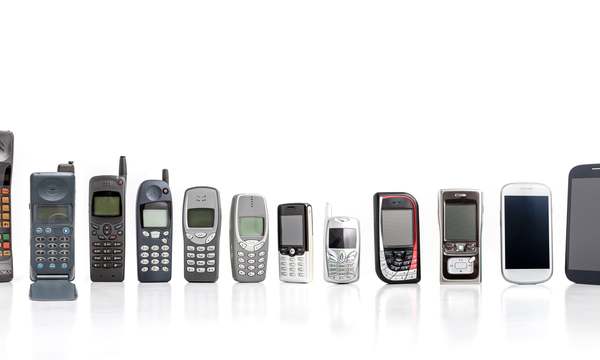
How to connect the internet of passengers
This article is from the CW Journal archive.
The first mobile networks were planned to cover roads. As the early hand-portables morphed into today’s smartphones, users increasingly accessed the network while “sitting back” in places - homes, offices, public spaces - where the network reach wasn’t so good.
Trains, boats and planes are special cases - even today, rail passengers making phone calls on routes like London King’s Cross to Cambridge know that using a cellular network isn’t a good option – coverage can be patchy even without nine tunnels! Even where there is a signal, it doesn’t give a very good data service.To keep passengers happier, if only to distract them from train delays, train operators now provide onboard public Wi-Fi. To do this, the only method available is to use a cellular modem to backhaul the traffic from the Wi-Fi router over 3G or 4G. Even though the train provides a better antenna than the average mobile phone, the service is still affected by patchy network coverage, especially through tunnels and cuttings.
Looking from the mobile operators’ point of view, there is a single cellular ‘terminal’ often generating hundreds of times more traffic than a single user but earning a negligible revenue. In addition, the railway line may be miles from the conurbations where most paying customers live. On routes like the London to Glasgow line over Shap in Cumbria, there’s the railway, the M6 motorway and precious little else. The roadway must be covered for emergency calls and the occasional passenger browsing the internet or driver using satnav, but the priority is coverage not capacity. The operator then has to decide how to boost capacity on each base site to support a packed train every hour or so.
A cellular base station can be likened to a router because it aggregates packets from many individual terminals and typically routes them to a higher level service. A train is like an office with a few hundred PC users connected to the internet through a leased line, since the traffic has already been ‘concentrated’. The difference is that those accessing the internet are moving, so different solutions, or perhaps new infrastructures, are needed. Even when the train service in South Korea provided a 1 Gbps link, capacity was immediately gobbled up by passengers, so considerably higher speeds will be needed.
Although intense coverage and capacity is needed along the railway track, by and large this doesn’t mean other areas need to be covered. There’s already a lot of physical infrastructure in place – the track itself and often overhead cables with the gantries that support them, cables alongside the track (often fibre these days), though power may not be so easily available. All of this can be exploited to support communications to the train.

How the actual connection to the train is made is a second-order question. It could be wireless using millimetre-wave (mmWave) frequencies – though these largely require line-of-sight, railway tracks don’t curve very much. The Korean trials used mmWave and Bristol-based BluWireless have been working with others in the UK to apply licence-exempt IEEE 802.11-2016 protocols above 45 GHz to rail communications. Highly directional antennas attached to trackside infrastructure and pointing along the track are used to communicate with antennas on the front and back of the trains. There will still be ‘cells’ but these will be long and thin.
The use of this highly linear geometry makes cell planning and frequency re-use very different to conventional cellular methods. For example, the track is empty for most of the time, so cells only need to be illuminated as a train comes into and passes out of range. The power requirement for the base station will be much reduced, perhaps allowing it to use renewables. Switching can be helped by integrating rail-signalling data into the network control. Networks should logically be built and operated by the rail infrastructure owner, perhaps with the ability to provide unbundled access for other operators.
|
GET CW JOURNAL ARTICLES STRAIGHT TO YOUR INBOX Subscribe now |
Another possibility is to use optical links. CW Discovering Startups winner Tethir has an innovative free-space optical (FSO) approach that relaxes the requirement for accurate optical link alignment. The company is collaborating with Broadband Access Strategies, Network Rail Infrastructure, and Northumbria University in the Innovate UK project Vehicle Internet Links using InfraRed Transmission of Information (VILIRI).
VILIRI’s approach is based on optical wireless communications (OWC), using infrared (IR) frequencies to send data between train and trackside at 10 Gbps. This is more than enough for all types of internet browsing, real-time communications and seemingly ‘unlimited’ capacity for each passenger. The method is to use advanced optics with high levels of concentration and carefully matched sensors that can take low power IR signals and process them reliably in real time. This needs transceivers on the train and along the track so data is transferred by line of sight from each transceiver in turn.
Alex Hudson, Tethir’s CEO, says the characteristics of FSO are in some ways similar to mmWave, with similar range and infrastructure, but the technology can win out at rates of 10 Gbps and above where power requirements for mmWave are difficult to meet.
Aeroplane passengers have similar needs to train users but travellers are usually out of reach of standard cellular networks, making satellite the best solution. Inmarsat’s Global Express (GX) satellite infrastructure operates in Ka band (26.5 GHz to 40 GHz) and the company works with airlines to support cabin broadband for passengers. The system also supports data connections to the avionics to enable the truly connected aeroplane. Other service providers, such as Honeywell, provide broadband to niche markets that are too small for Inmarsat to address directly, such as business-jet users.
Satellite services are accessed from the planes with conformal, fuselage-mounted, flat-panel array antennas. The GX service is supported by four geostationary satellites with a combination of narrow spot beams that create terrestrial cells, and additional steerable beams to add capacity in real time when needed.
There aren’t many cell sites at sea, either. Cruise ships are big business in some parts of the world, like the Caribbean and Europe, each packed with up to 5,000 reasonably well-off people having good times they want to instantly share on social networks. Some ships provide on-board cellular coverage over picocells and satellite backhaul, primarily for voice traffic, but Wi-Fi is the obvious alternative once satellite broadband backhaul is in place.
One problem is the number of users – a ship is usually covered by a single spot beam which means capacity is limited. Swamping demand is usually throttled back by price, which also avoids a single ship in the Caribbean, for example, where there are dozens of cruise ships in quite a small area, stealing all the bandwidth. The system is also used by the ship’s operator to connect to the vessel’s data systems and to provide crew amenities. Smaller ships that provide a more luxurious passenger experience may bundle broadband access in with the ticket price.
Users are accustomed to using Wi-Fi and free hotspots seem to be appearing everywhere. Current Wi-Fi access infrastructures don’t support passengers very well, especially on trains, but this is an audience that’s hungry for distraction.
If the industry decides, as it seems to have done, that there should be no limit on where people can access the internet, new technological solutions to the backhaul problem will continue to be developed. Various innovations to solve the challenge are being researched today – expect to see some very different systems emerge in the near future.
|
DO YOU HAVE A VIEW ON THIS SUBJECT, OR RESPONSE YOU'D LIKE TO SHARE? |
John Haine has spent his career in the electronics and communications industry, working for large corporations and with four Cambridge start-ups. His technical background includes R&D in radio circuitry and microwave circuit theory; and the design of novel radio systems for cordless telephony, mobile data, fixed wireless access and IoT communications. He has led standardisation activities in mobile data and FWA in ETSI, and contributed to WiMax in IEEE. At various times he has been involved in and led fund-raising and M&A activities. In 1999 he joined TTP Communications working on research, technology strategy and M&A; and after the company’s acquisition by Motorola became Director of Technology Strategy in Motorola Mobile Devices. After leaving Motorola he was CTO Enterprise Systems with ip.access, a manufacturer of GSM picocells and 3G femtocells. In early 2010 he joined Cognovo, which was acquired by u-blox AG in 2012. He led u-blox' involvement in 3GPP NB-IoT standardisation and the company's initial development of the first modules for trials and demonstrations. Now retired from u-blox he is an Honorary Professor in Electronic and Electrical Engineering at Bristol University, where he chairs the SWAN Prosperity Partnership Project external advisory board . He was founder chair and is Board Member Emeritus of the IoT Security Foundation. He served on the CW Board chaired the Editorial Board of the CW Journal. John has a first degree from Birmingham (1971) and a PhD from Leeds (1977) universities, and is a Life Member of the IEEE.











